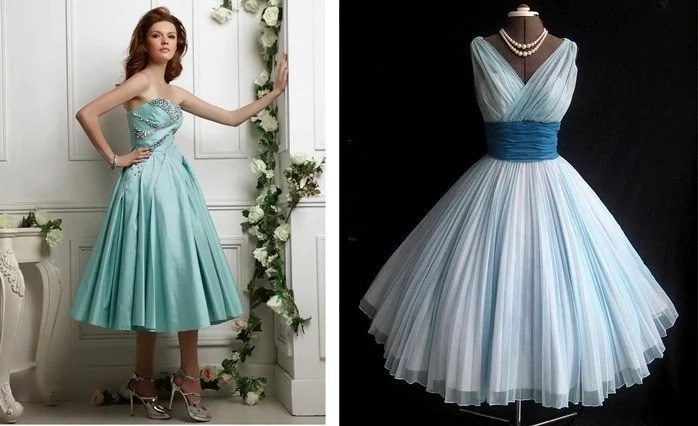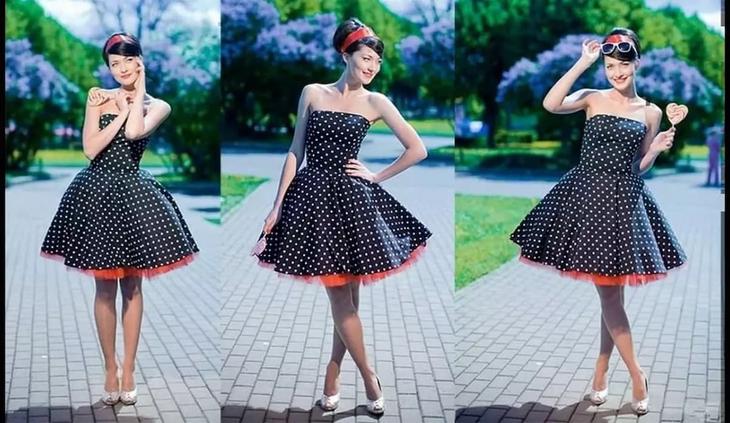Fashion of the 60s: Dresses
As you know, decades later, many trends are returning.
So the fashion of the 60s is now as relevant as it was half a century ago.
Let's talk about the most stylish styles of early retro dresses.
Fashionable dresses of the 60s: features
A landmark decade in the fashion industry is the 60s of the last century. The old conservative canons collapsed, and new ones came in their place - bolder and brighter.
It was at this time that the concept of youth trends arose, and the history of fashion was replenished with the iconic names of such style icons as Catherine Deneuve, Jacqueline Kennedy, Brigitte Bardot and the unforgettable and bold Twiggy.
The main feature that conquers the dresses of the 60s is unintentional sexuality.
No flashy necklines or revealing styles, only chic and attractive elegance with a touch of coquetry.
The main features of fashion in the 1960s:
simple cut; unobtrusive finish; lack of a large number of details.
Another recognizable feature of the dresses of that time is the innovative mini length, which allowed the fair sex to demonstrate to the world the beauty and grace of women's legs.
The absence of frills, frills and other details that ladies of the past were accustomed to was compensated by bright prints and colorings.
Bold colors, black and white patterns, contrasting tones and classic polka dots were still new in the 1960s and instantly became favorites of extravagant designers.
Fashion of the 60s: styles of dresses
Not everyone is aware that many styles that are now considered classics came to us precisely from the 60s of the last century:
Trapeze.
A laconic and simple trapezoid is one of the symbols of that fashionable decade.
Of the details, patch pockets and colored piping were recognized, which often contrasted with the main shade of the model.
Geometric shapes also ruled the ball: square and triangular inserts of fabric of a different color created that unique zest of style a la teenager, which fashionistas of the 60s sought.
Case.
The classic fitted silhouette of a sheath dress came to us from the same times.
Simple dresses without sleeves and models with a false narrow collar were especially popular.
In combination with a short length, outfits of this type look restrained, but by no means boring.
Fitted dresses with a fluffy flared skirt.
Such models were and remain relevant in all sorts of variations: with an open top, with and without sleeves, on thin and wide straps, closed and with a neckline, with a turn-down "sailor" collar and a stand ...
A distinctive feature of these styles was the emphasis on the waist. It was achieved due to the cut itself and large belts - both fabric, tied with a bow, and wide elastic belts with a large buckle.
Colors deserve special attention. In the 1960s, noble tones were popular: white, blue and gray.
At the same time, one of the highlights of the decade is peas and bright floral prints. These trends in the fashion world are now repeated most often.
It was also in the 1960s that dresses began to be sewn with intricate patterns and photo reproductions.
It was a new word that, despite the passage of time, is still popular today.
Evening dresses from the 60s
The parties of those years were strikingly different from the secular gatherings of the past: incendiary dances, unrestrained fun and rock and roll came into fashion, which left their mark on the outfits of that time.
To make it comfortable to dance, the ladies did not wear floor-length dresses - they were replaced by cropped skirts up to or above the knee.

Their splendor allowed them to flutter and spin, and at the same time leave an indelible impression on the opposite sex.
The most popular details of women's evening dresses of the 60s were:
Wide belt.
A satin belt on a lace dress or vice versa looked chic.
Lush lining a la ballet tutu.
A petticoat in contrasting colors at all times looked very impressive.
See for yourself: white lining under a black dress or red lining peeking out from under a navy blue skirt with white polka dots.

